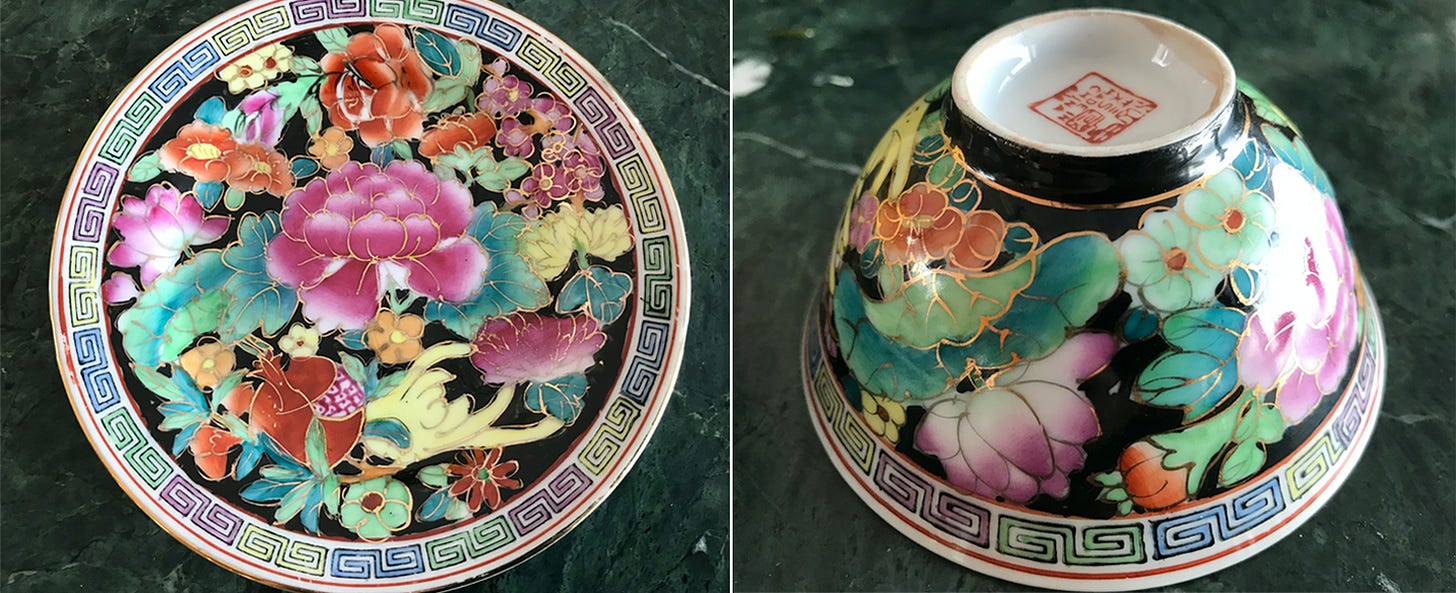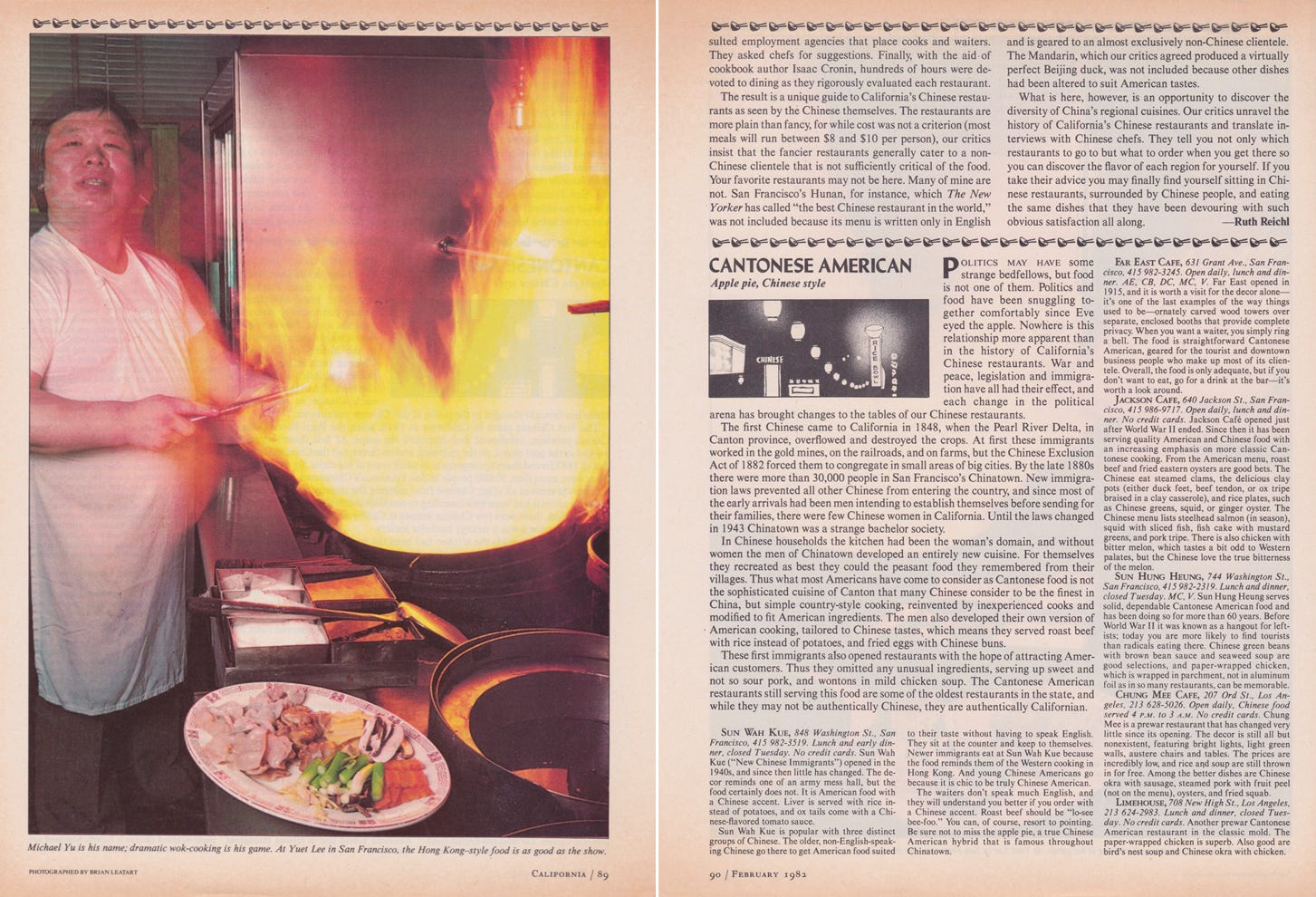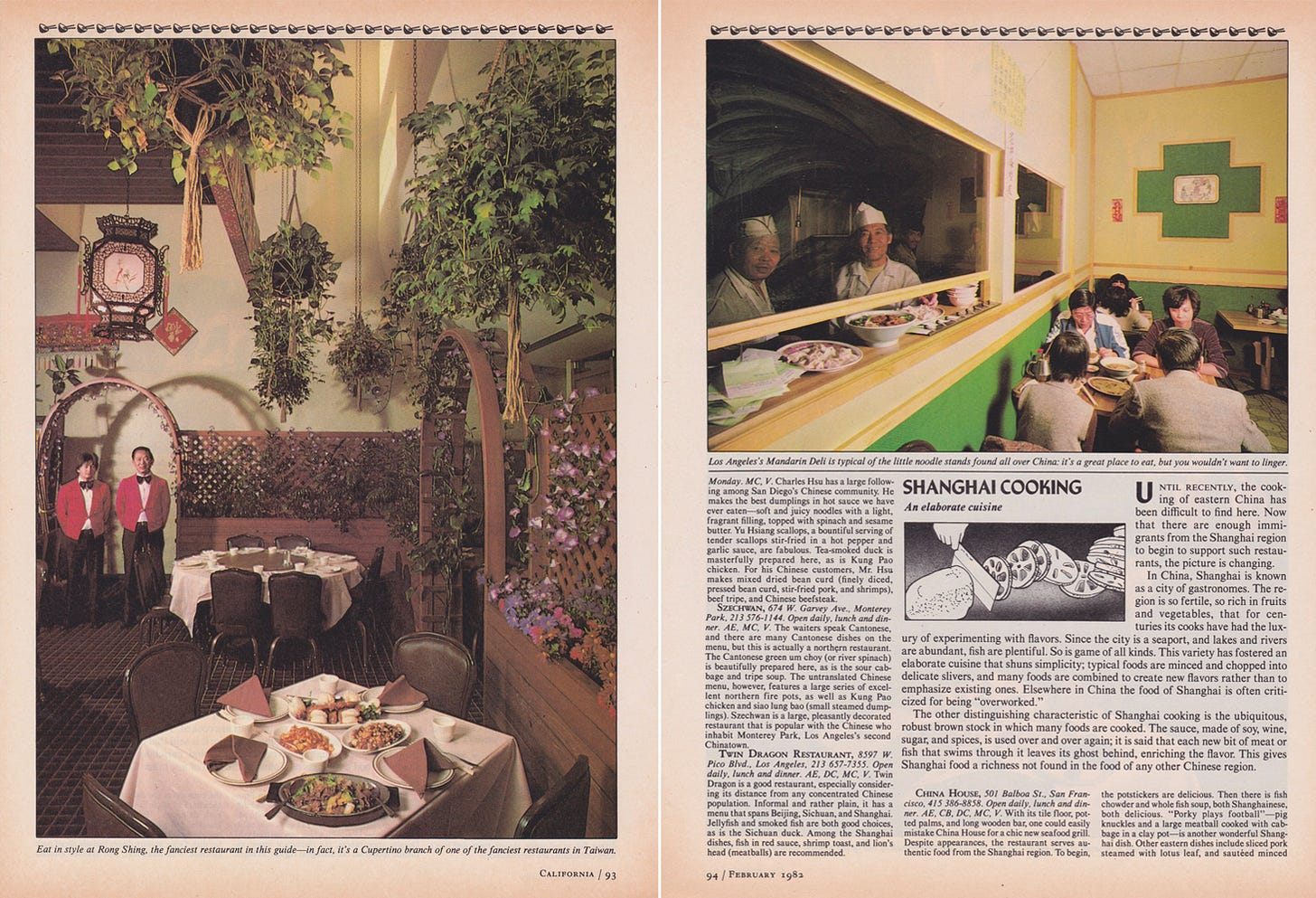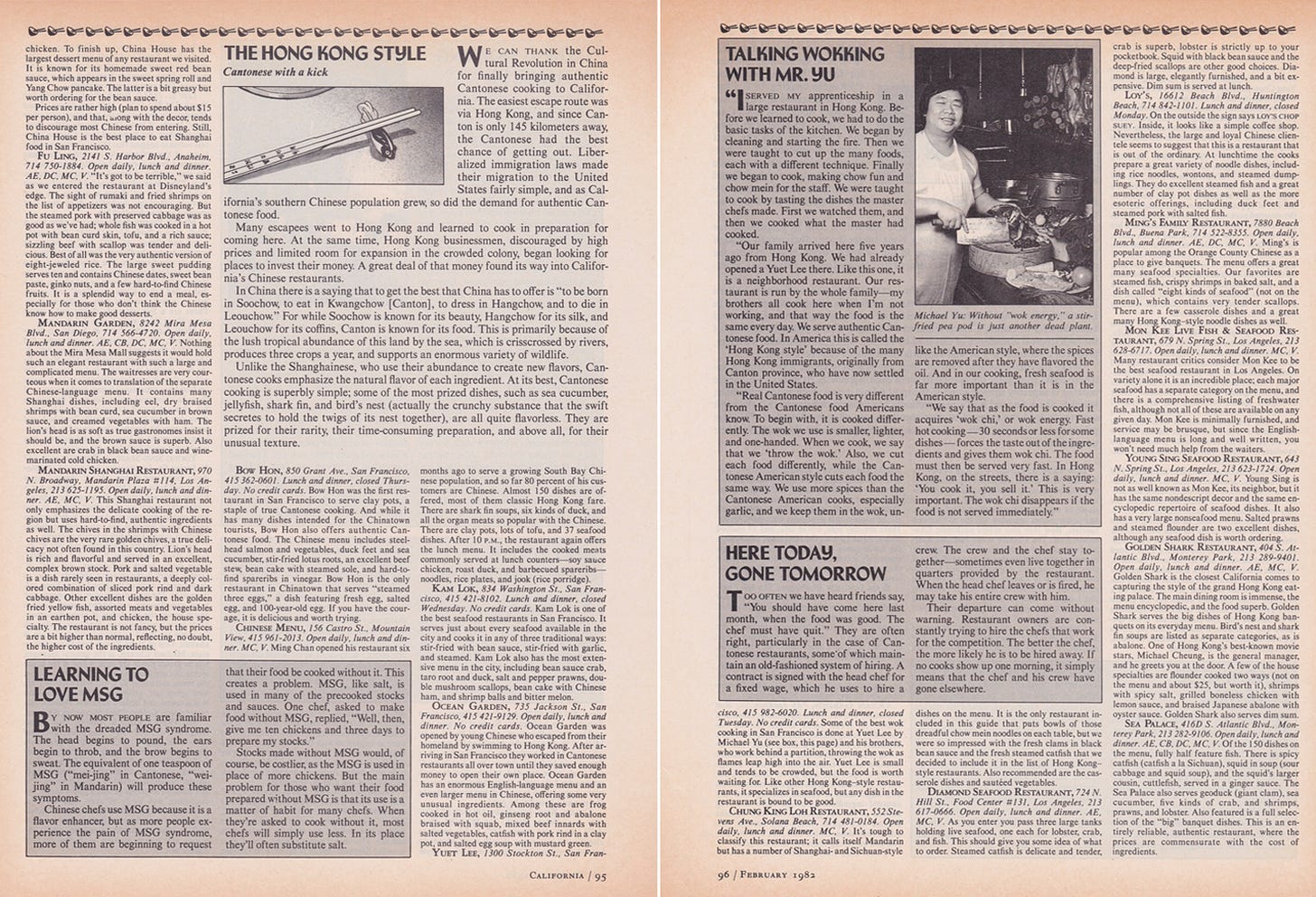For years one of the great pleasures of my New York life has been wandering through Chinatown’s wonderful Wing On to dream over their hand-painted porcelain. I’ve been going to Chinatown’s oldest continuously operated store since I was a child, and I was thrilled to see it pop up online.
Selling everything from vintage plates (like the ones above), to adorable little chop stick rests and teapots, the store is a treasure trove of Chinese tableware. If you believe that wine tastes better in beautiful stemmed glasses (I do), just think how much more appealing Chinese food will be when it’s served in beautiful bowls.
This piece is incredibly long, and I don’t expect you’re going to sit down and read it all. But although I’d had spent time in mainland China (rare for 1980), this article changed the way I thought about Chinese food. Of all the articles I produced for California Magazine, this is the one I think about most often.
The authors will surprise you. Wang Yin is director Wayne Wang, just before his film Chan is Missing catapulted him to Hollywood fame and films like The Joy Luck Club and Maid in America. Visionary architect Fu-Tung Cheng became famous as the poet of concrete. And Issac Cronin, who I knew as the author of the International Squid Cookbook, is a social critic. What we had in common was a deep interest in Chinese food and a desire to give our readers a better understanding of the Chinese food that was then available to California people.
I remember driving up and down the state, eating meals with their mothers, grandmothers, aunts and uncles. I learned about Chiu Chow and Hakka cooking, and the restaurants serving a hybrid Chinese-American cuisine. Chefs told us about their training, and I’ve never forgotten Mr. Pu saying “The Chinese have myriad flavors that are important to their cooking but in my opinion if you take away the essence of milk from French cooking not much is left.”
My friend Phoebe Papademetriou, who is helping me with La Briffe (I couldn’t do it without her), was curious about how many of these restaurants are still around. So she did some research. Shockingly, only 8 are still with us. Far East Cafe, Peking, Chinese Friends Restaurant, San Wang, Twin Dragon Restaurant, Bow Hon, Kam Lok and the beloved Yuet Lee. Most are new Chinese restaurants, but one is a New Orleans style restaurant, Narai is now a Russian restaurant and Chuck’s Fountain has become a beauty salon.
If that made you hungry for a taste of Chinese food, I understand. Here’s the fastest, easiest way I know to satisfy that appetite.
Spicy Chinese Noodles
Cook a half pound of Chinese noodles (in a pinch use dried egg noodles or spaghetti) until al dente, drain, toss with a bit of peanut oil and set aside.
Mince fresh, peeled ginger until you have a couple of tablespoons (it should be about a ½ inch long piece).
Chop 2 scallions.
Mix 1 teaspoon of sugar into 3 tablespoons of Chinese hot bean paste with garlic (or if you have it, Pixian Doubanjiang). Set aside.
Heat a wok until a drop of water skitters across the surface. Add a tablespoon of peanut oil, toss in the ginger and stir fry for about half a minute, until the fragrance is hovering over the wok.
Add a half pound of ground pork and stir fry until all traces of pink have disappeared. Add the bean sauce mixture and a splash of water; cook and stir for about 2 minutes.
Stir in the scallions and noodles, and quickly toss. Add a drop of sesame oil and turn out onto a platter.
Serves 2.
Click HERE for a printable recipe.
Before we decided to share the entire California Magazine article Phoebe and I had planned to offer you many other menus and articles about Chinese food in an earlier America; look for them in a future edition of La Briffe.















I agree with Ellen. While it is fun to see the old articles in this format, they are hard to read. Even in Substack, there is only one level of zoom. For the pictures that are two pages (such as p. 89-90), the zoom is halved, so the words are correspondingly smaller, making it hard to read. It is also frustrating that each page is its own picture and you can't click forward from one page to the next to keep reading. I have to go back to the main page and click on the next picture, then adjust the zoom (again). It makes for a less-than-satisfactory reading experience.
The New York Times has archives where you can see the article/pictures in the archive but read the digitized version. Maybe something to consider?
Great, I like to know this!